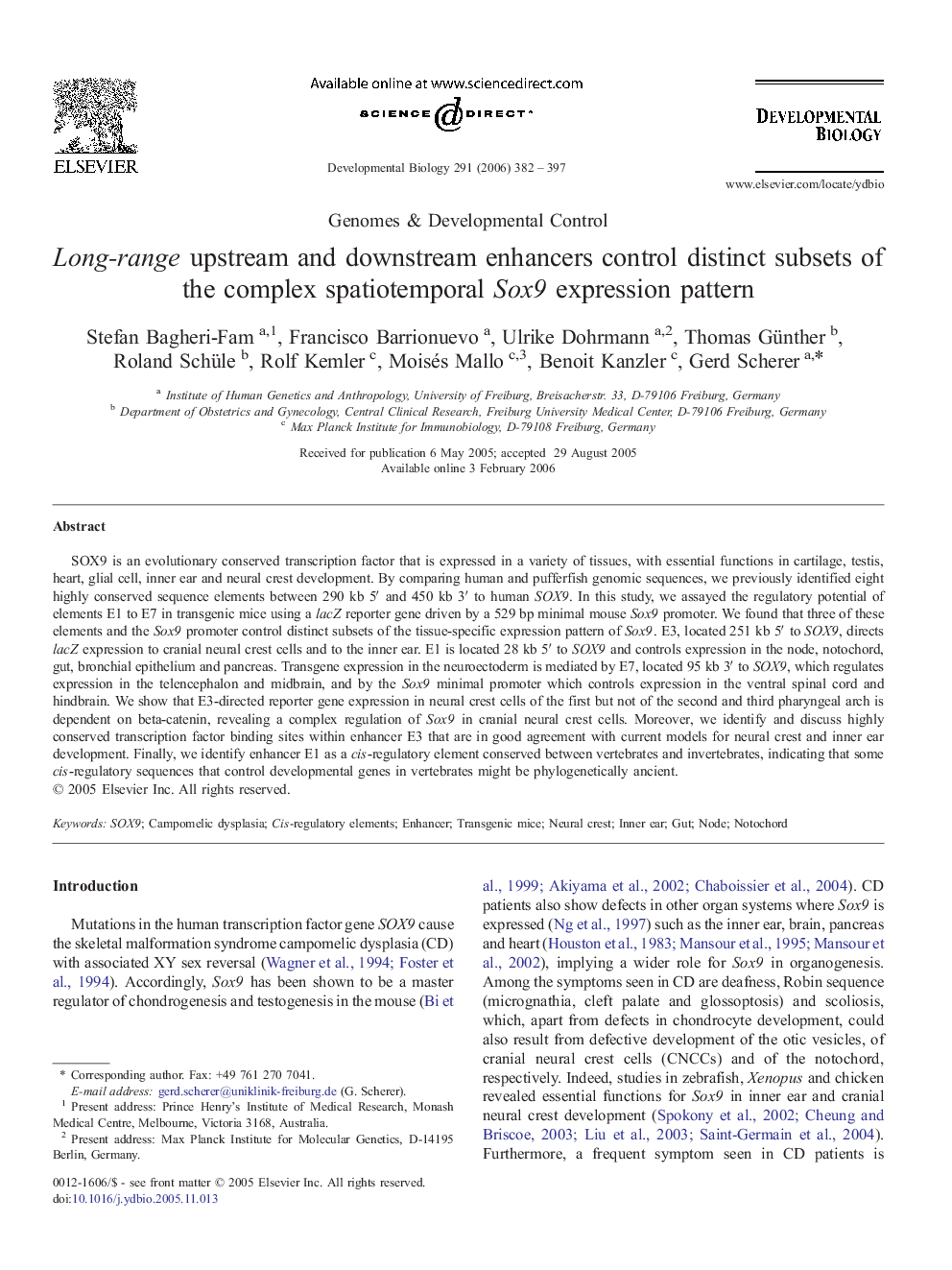| Article ID | Journal | Published Year | Pages | File Type |
|---|---|---|---|---|
| 2176050 | Developmental Biology | 2006 | 16 Pages |
SOX9 is an evolutionary conserved transcription factor that is expressed in a variety of tissues, with essential functions in cartilage, testis, heart, glial cell, inner ear and neural crest development. By comparing human and pufferfish genomic sequences, we previously identified eight highly conserved sequence elements between 290 kb 5′ and 450 kb 3′ to human SOX9. In this study, we assayed the regulatory potential of elements E1 to E7 in transgenic mice using a lacZ reporter gene driven by a 529 bp minimal mouse Sox9 promoter. We found that three of these elements and the Sox9 promoter control distinct subsets of the tissue-specific expression pattern of Sox9. E3, located 251 kb 5′ to SOX9, directs lacZ expression to cranial neural crest cells and to the inner ear. E1 is located 28 kb 5′ to SOX9 and controls expression in the node, notochord, gut, bronchial epithelium and pancreas. Transgene expression in the neuroectoderm is mediated by E7, located 95 kb 3′ to SOX9, which regulates expression in the telencephalon and midbrain, and by the Sox9 minimal promoter which controls expression in the ventral spinal cord and hindbrain. We show that E3-directed reporter gene expression in neural crest cells of the first but not of the second and third pharyngeal arch is dependent on beta-catenin, revealing a complex regulation of Sox9 in cranial neural crest cells. Moreover, we identify and discuss highly conserved transcription factor binding sites within enhancer E3 that are in good agreement with current models for neural crest and inner ear development. Finally, we identify enhancer E1 as a cis-regulatory element conserved between vertebrates and invertebrates, indicating that some cis-regulatory sequences that control developmental genes in vertebrates might be phylogenetically ancient.
